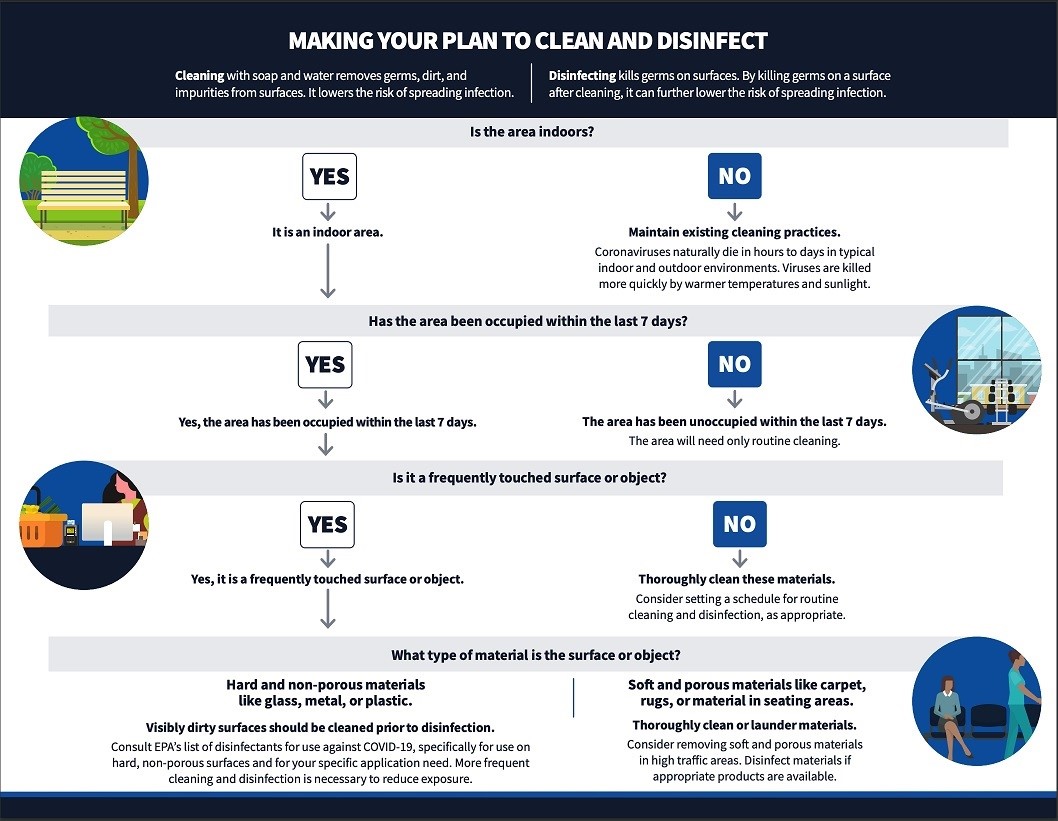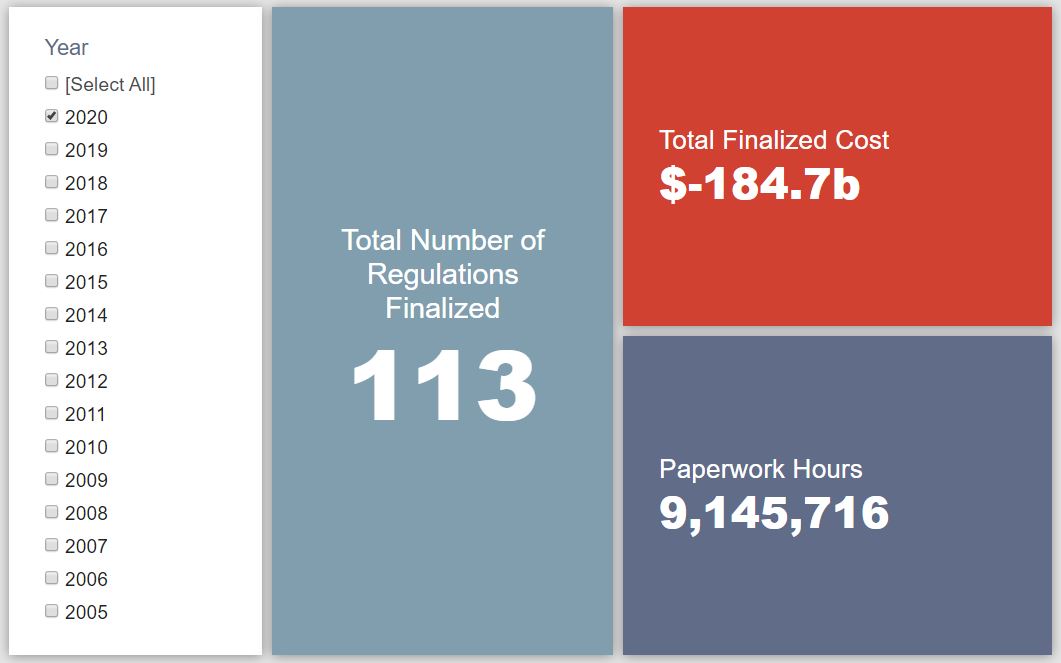Week in Regulation
May 4, 2020
SAFE Vehicles Rule Pulls into the Federal Register Garage
Originally released at the end of March, the administration’s landmark “Safer Affordable Fuel-Efficient (SAFE) Vehicles Rule” officially landed in the Federal Register. The rule, issued jointly by the Environmental Protection Agency and National Highway Traffic Safety Administration, single-handedly swings the regulatory budgeting picture. The engine did kick back a bit, though. The rule’s prodigious length apparently complicated the production of the Federal Register towards the end of last week. Across all rulemakings, agencies published $186.3 billion in total net cost savings but added 6.9 million hours of annual paperwork.
REGULATORY TOPLINES
- 2020 Proposed Rules: 49
- 2020 Final Rules: 48
- 2020 Total Pages: 26,283
- 2020 Final Rule Costs: -$184.7 billion
- 2020 Proposed Rule Costs: $3 billion
TRACKING THE REGULATORY BUDGET
As noted above, the SAFE Vehicles rule was the highlight of the week. The rule replaces the Obama-era Corporate Average Fuel Efficiency (CAFE) standards for cars and light trucks in model years 2021 through 2026. The American Action Forum previously examined its details here. Clocking in at nearly $200 billion in estimated total net savings, it flips the fiscal year (FY) 2020 regulatory budget situation from a consistent, net-cost position to one where the savings column far surpasses the administration’s stated FY 2020 goal. Its highly technical nature (much like its Obama-era predecessor), however, means that it runs over 1,100 pages in length. This caused a notable delay in the overall publication of last Thursday’s Federal Register.
While the deregulatory SAFE Vehicles rule’s savings eclipse all other rulemakings in scale, there was a pair of significant regulatory actions as well. The two rules from the Department of Health and Human Services (HHS) seek to establish a framework that encourages greater interoperability in the health information technology space. Setting up such a system, however, does bring sizable administrative costs. HHS estimates that, combined, the rules bring roughly $13.1 billion in total new costs for the purposes of the regulatory budget.
The Trump Administration expected to reach $51.6 billion in cumulative net savings in FY 2020. To date in the fiscal year, agencies have officially published 76 deregulatory actions and 26 regulatory actions, totaling $186.1 billion in quantified total net cost savings.
THIS WEEK’S REGULATORY PICTURE
This week, the Centers for Disease Control and Prevention (CDC) and the Environmental Protection Agency (EPA) offer guidance on cleaning facilities to help prevent the spread of COVID-19.
Source: https://stacks.cdc.gov/view/cdc/88478
The CDC and EPA issued guidance on April 28 for cleaning and disinfecting public spaces. The guidance calls for those in charge of these spaces to develop a plan for identifying frequently touched items and surfaces and to regularly clean and disinfect them. It also calls for continued social distancing, the wearing of face coverings, and washing of hands to help lower the risk of COVID-19 spread.
As public places, particularly workplaces and retail businesses, reopen, one critical issue yet to be resolved is the liability on public places if workers or members of the public contract COVID-19. Businesses have asked Congress for some level of liability protection if they remain open or re-open. No liability protection has yet been enacted, however.
Though guidance is only a reference, and not a regulation, it seems likely that courts would expect public places to follow the agencies’ guidance and a previously released document from the Occupational Safety and Health Administration (OSHA) in order to not be considered negligent. In an executive order issued this week invoking the Defense Production Act (DPA) for meat processing facilities, President Trump explained that a primary reason for the action was to provide these facilities with the liability protection afforded by the DPA. In addition, the order specifically cites CDC and OSHA guidance on how to safely continue operating such facilities, and implies that decisions to close these facilities, where many workers have contracted COVID-19, go beyond what is necessary due the importance of meat processing in the food supply chain.
TOTAL BURDENS
Since January 1, the federal government has published $181.7 billion in total net cost savings (with $184.7 billion from finalized rules) and 23.8 million hours of net annual paperwork burden increases (with 9.1 million hours due to final rules). Click here for the latest Reg Rodeo findings.













